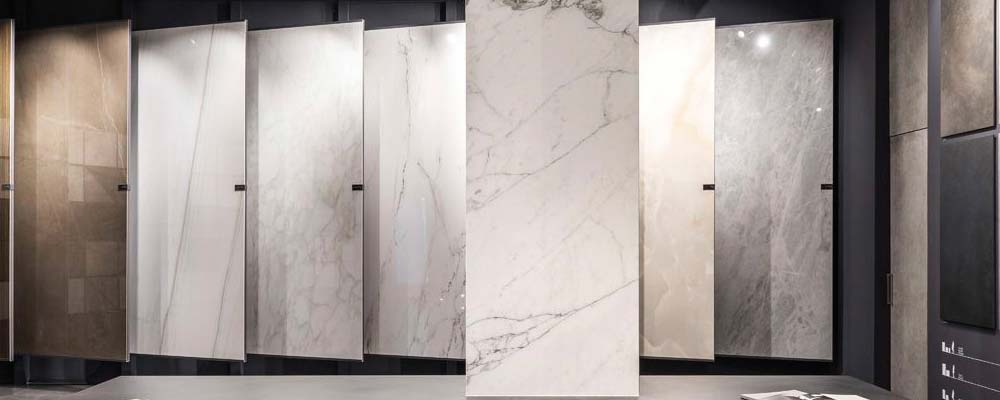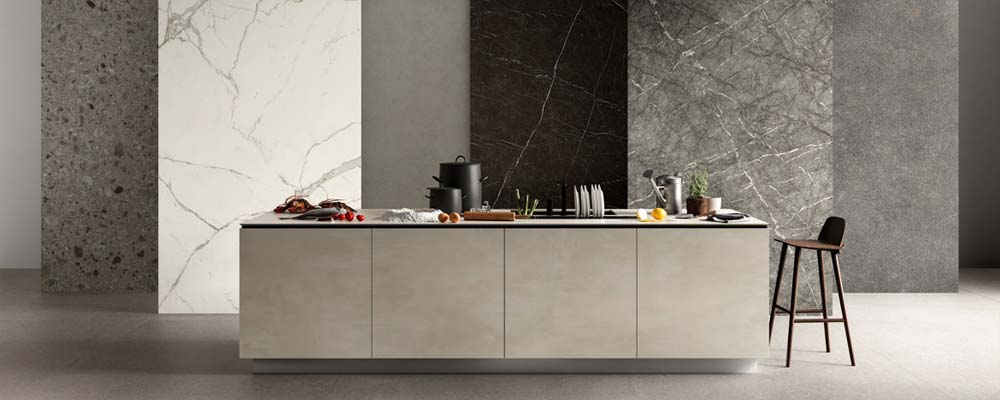Examining the advantages of porcelain ceramic slabs compared to other conventional materials
In the late seventies, the most important turning point in the field of ceramic production was the manufacture of porcelain ceramic slabs. The production of these ceramic plates led to fundamental developments in the architecture industry.
These porcelain slabs are made of different elements than traditional ceramics. Its ingredients include: finely ground sand and compacted clay. These same compounds have turned these plates into a coating with low porosity, high density, more resistant and flexible. The flexibility of these plates has made them become a unique product and match well with metals, fabrics and natural elements. Knowing whether ordinary ceramic plates are better or ceramic slabs and porcelain ceramics will help you make a more informed choice when planning and designing the interior and exterior spaces of your home.
Comparison of porcelain ceramic slabs with marble
A very special feature of ceramic slabs is the absence of porosity in it. This feature makes it more stain resistant and easier to clean and maintain.
In terms of aesthetics and appearance, porcelain ceramic slabs are similar to marble. Thanks to the advancement of technology in today’s era, you can get large ceramic plates with complex veins and very similar to rare marbles. Even the color of these plates and veins is constant and does not change. Designers say that the best type of floor covering is to use these porcelain slabs. These plates can be installed on the floor of residential or even office spaces and create a shiny, mirror, elegant and beautiful appearance.
The lightness of porcelain plates also makes it easier to process, cut and install them. Even choosing stone-patterned ceramic slabs instead of marble or stone-patterned ceramics is a suitable solution for environmental protection. The life cycle of ceramics is longer than that of stone, and it does not need to consume a lot of stone resources for its production.

Comparison of porcelain ceramic slabs and parquet
From the seventies until today, porcelain slabs are produced with a lot of technology and there are examples of them that look like natural wood. This similarity is so great that you may not be able to easily distinguish it with a natural specimen.
While wood is a delicate and sensitive material and requires a regular routine of oiling and maintenance, porcelain ceramic slabs do not require special maintenance. This feature is due to the impenetrability and resistance of this material against scratches and abrasions.
In addition, wood has limitations due to its nature that you may not be able to install it in every space. For example, you should not use wooden parquet for environments that are subject to high traffic or humidity. But ceramic slabs are very suitable and practical for such environments.
Comparison of porcelain ceramic slabs and natural stone
By purchasing ceramic porcelain slabs and installing them in the desired area, you will fully understand that these plates are in accordance with natural stone in terms of technical characteristics such as durability, resistance to freezing, weather changes and impact. In fact, when comparing ceramic slabs and stone slabs of the same thickness, porcelain slabs are more resistant. However, its strength can be seen as a great variety in coloring and also the useful life of the pages.
Unlike stones, porcelain ceramics have high conductivity, and for this reason, installing them as indoor flooring near radiant heating systems will be very practical and excellent. Another feature that draws the attention of designers and users to ceramic plates is their high resistance to mold and bacterial growth. Molds and fungi multiply quickly on natural stones. One of the best and strongest brands in the market is the Miko brand, which offers a wide variety of sizes, colors, and stripes, and has no competitors in terms of quality.

Ease of installation and movement is another feature of ceramic slabs that puts them in a higher category than natural stones. Therefore, ceramic slabs provide the possibility of creating the continuity and integrity of the floor of your desired environment. The very important feature of these plates is that you can install them on any smooth surface. As interior flooring, walls and floors of service and urban areas and even facades of buildings, you can use large porcelain ceramic plates and floor ceramics and get the best possible visual effect.
Source

